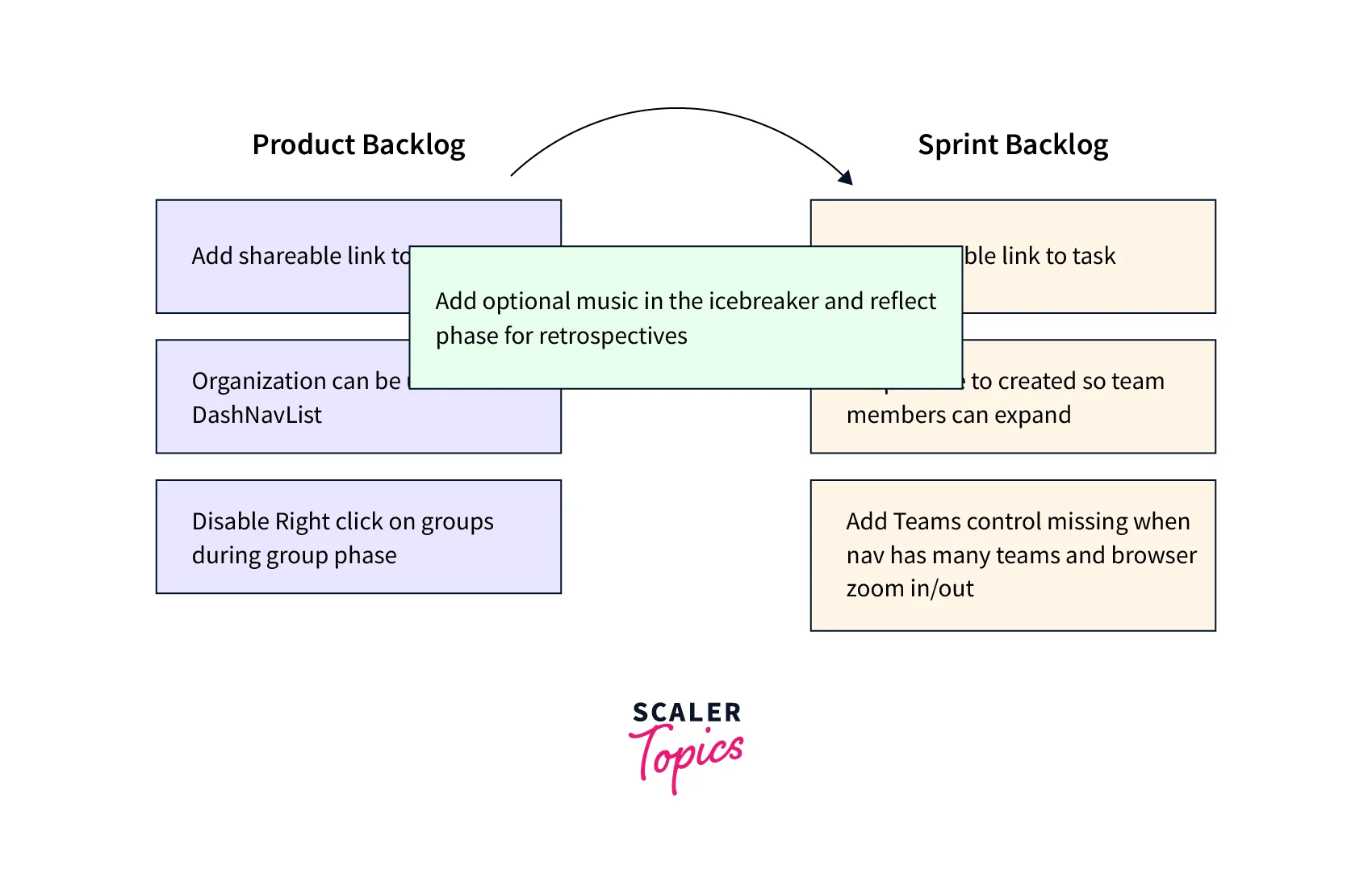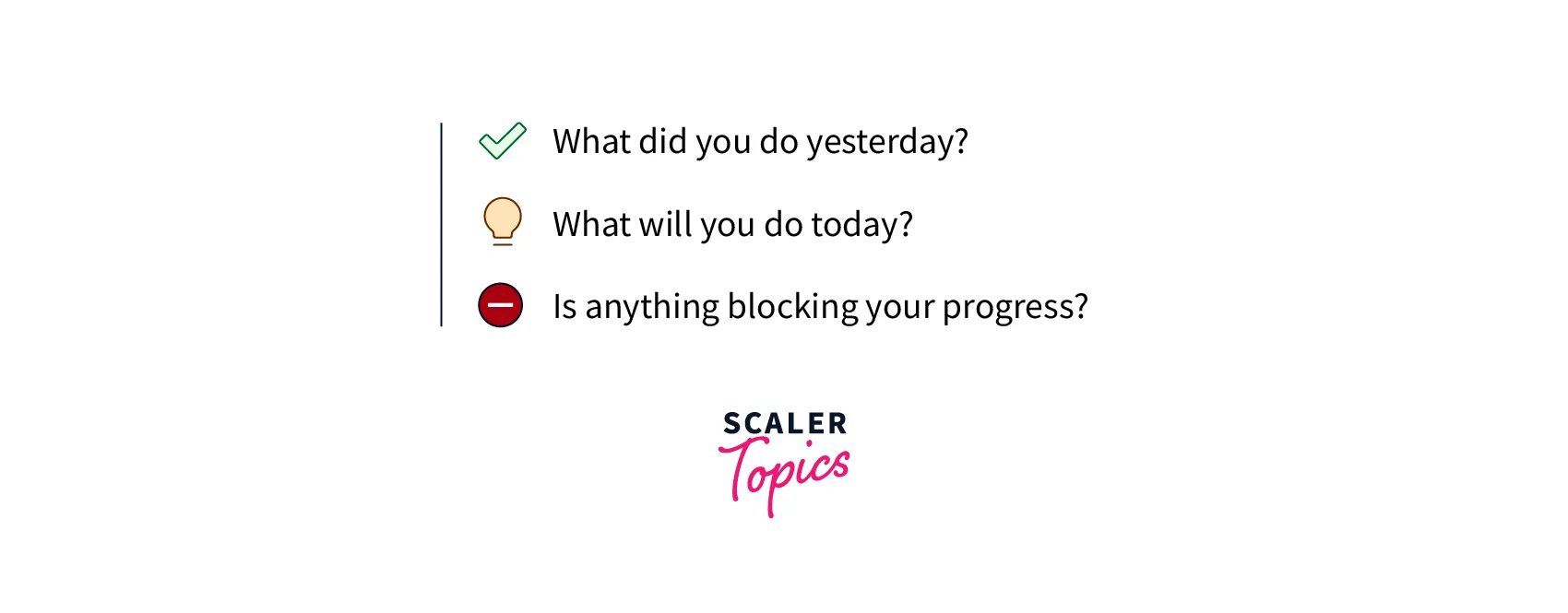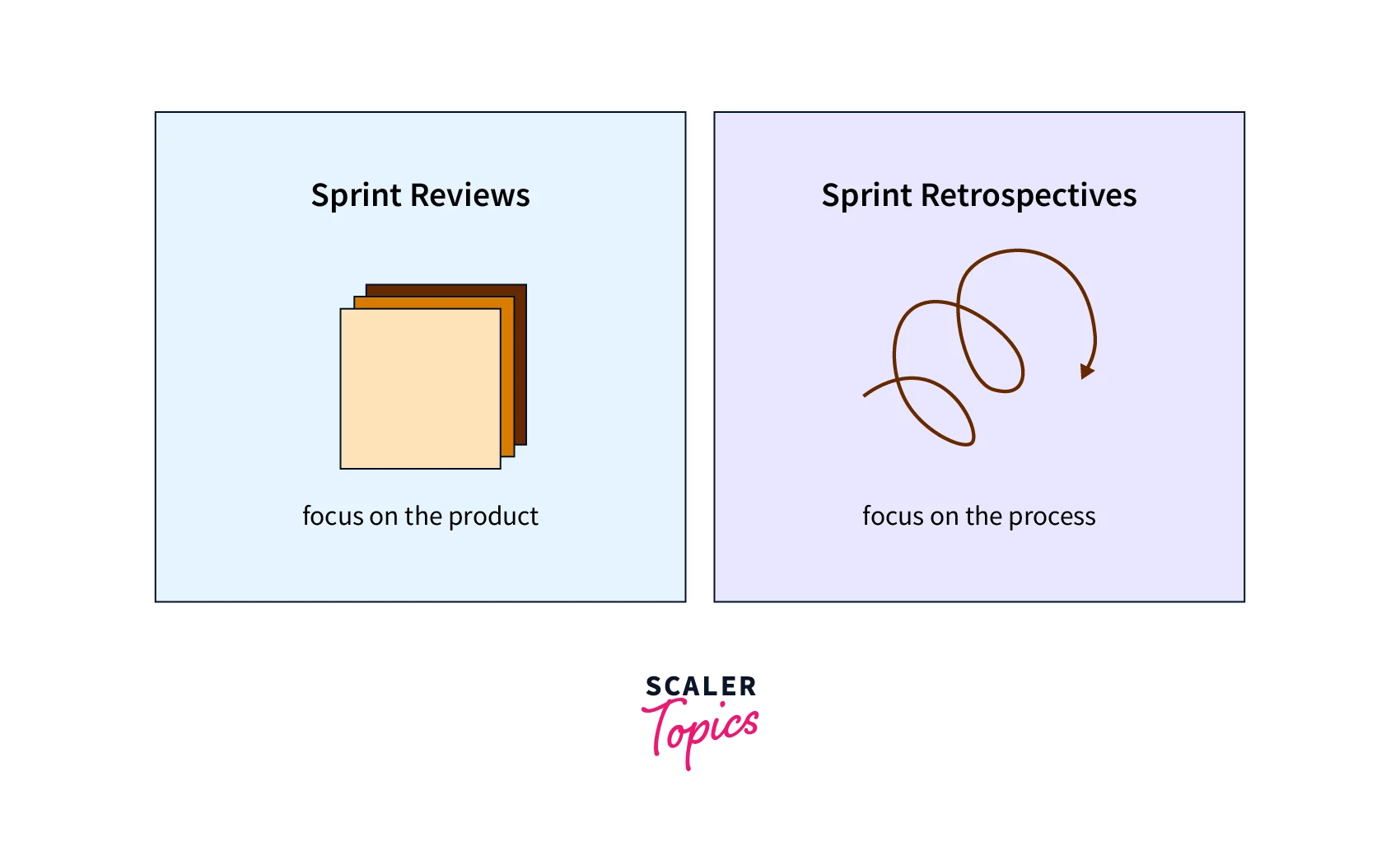Agile Testing - Sprint Planning
Overview
In agile software development, sprint planning is a critical step that lays the foundation for successful project execution. It involves an effort between development and test teams to define the scope, goals, and deliverables of a given sprint, which is an iteration within the time box of agile project work. Sprint planning ensures alignment, transparency, and efficient use of resources during the development and testing process.
Introduction to Scrum ceremonies
Scrum is an agile framework widely used in software projects to manage complex work and promote iterative and incremental delivery. Scrum ceremonies are important events or meetings that create structure and promote collaboration in Scrum teams. These ceremonies enable effective communication, transparency, and continuous improvement throughout the project.
Let's get acquainted with the most important ceremonies of Scrum:
- Sprint Planning: Sprint planning is a collaborative meeting held at the beginning of each sprint. The development team and the product owner discuss and select user stories or backlog items to include in the sprint backlog.
- Daily Stand-up (Daily Scrum): Daily stand-up is a short, time-limited meeting that the development team holds every day during the sprint. Team members provide status updates, discuss progress and identify potential obstacles.Each team member answers three questions:
- What did I accomplish yesterday?
- what will I do today?
- Are there obstacles in my way?
- Sprint review: At the end of each sprint, a sprint review is conducted. The development team presents the completed work to stakeholders, product owners and other interested parties.
- Sprint Retrospective: The Sprint Retrospective is a meeting held at the end of each Sprint after the Sprint Review. The team reflects on their collaboration, processes, and tools they use during the sprint.
Sprint Planning Common Challenges & How to Overcome?
Sprint planning is a critical phase in Agile software development, but it can come with its fair share of challenges. Here are some common challenges associated with sprint planning and strategies to overcome them:
- Ambiguous or Ambiguous Claims:
- Engage with stakeholders: Communicate frequently and openly with stakeholders to clarify requirements and better understand their expectations.
- Use user stories: Share requirements in user stories with clear acceptance criteria to ensure mutual understanding among team members.
- InvolveProduct Owners: Encourage product owners to actively participate in sprint planning to clarify and resolve requirement ambiguities.
- Unrealistic or inaccurate estimates:
- Use historical data: Analyze past sprints to gather data on team velocity and use it as a benchmark to make more accurate estimates.
- Involve the entire team: Involve all team members in the evaluation process to leverage their collective knowledge and expertise.
- Use relative size: Instead of setting absolute time estimates, use methods like talking points or shirt size to compare the complexity and effort of different tasks.
- Over or under commitment:
- Backlog Prioritization and Refinement: Work with the Product Owner to prioritize user stories based on their value and feasibility. Refine the backlog to ensure it contains enough work for the sprint.
- Consider team capacity: Consider team capacity and availability when selecting user stories for a sprint. Avoid overloading the team with too many tasks or underutilizing their skills.
- Accept empirical evidence: Review the team's past performance and pace to set realistic expectations and commit to a manageable amount of work.
- Lack of teamwork:
- Encourage active participation: Create a collaborative environment where all team members can share their views and opinions during sprint planning.
- Encourage cross-functional collaboration: involve team members from different disciplines (developers, testers, designers, etc.) to ensure a holistic understanding of the work and facilitate better design.
- Encourage communication: hold regular sprint planning meetings and encourage open and transparent communication to resolve potential conflicts or challenges.
- Inadequate preparation:
- Pre-specify the receipt of orders: Before planning a sprint, make sure that the backlog is well maintained, refined, and contains sufficiently detailed user stories.
- Define Sprint Goals: Have clear sprint goals in mind before starting a sprint planning session. This helps maintain focus and alignment throughout the process.
- Allow time for preparation: Give the team enough time to review the backlog, ask questions, and prepare for the sprint planning meeting to ensure a smooth and productive session.
- Lack of flexibility:
- Embrace Adaptive Design: Agile methods are designed to be agile. Be open to tweaking and adjusting the sprint plan as new information or challenges emerge during the sprint. Re-evaluate
- priorities regularly: Conduct frequent backlog refinement sessions and re-evaluate priorities to ensure that the sprint plan is aligned with the changing needs of the project.
- Encourage continuous feedback: Create a culture of continuous feedback and learning where team members can provide feedback and suggest changes to improve the sprint plan.
Sprint Planning
Sprint planning provides a structured approach to defining a sprint goal, selecting user stories or backlog items, and creating a sprint execution plan.

A sprint planning ceremony typically includes the following key activities:
- Product Backlog Evaluation: The Product Owner presents the most important products in the product base to the development team. The group holds discussions to reach a common understanding of the user stories, their acceptance criteria, and the general goals of the project.
- Sprint Goal Definition: The Scrum Team, including the Product Owner and the Development Team, together define the Sprint Goal. A sprint goal represents a goal or business value that the team wants to achieve during the sprint. It gives clear direction and focus to the team's efforts.
- Backlog Selection: The development team selects user stories or backlog items to work on during the sprint. The team considers various factors such as priority, value, dependencies, and capacity to determine the items that can realistically be completed in the sprint time.
- Breakdown of Tasks: Once user stories are selected, the development team breaks them down into smaller functional tasks. These tasks represent the specific activities required to complete user stories. The team discusses together and evaluates the difficulty of each task, which ensures a common understanding of the task.
- Capacity Assessment: The development team assesses the effort or complexity of selected user stories or tasks. This assessment is usually done using rationing techniques such as poker or story point planning to provide a measure of work volume or effort. Estimating helps the team understand the capability and set realistic expectations for the sprint.
- Create a sprint backlog: Selected user stories, their associated tasks, and estimated work volumes from the sprint backlog. The sprint order book acts as a blueprint for teamwork during the sprint, providing visibility into tasks and responsibilities. It is a dynamic document that can evolve during the sprint as new information or requirements emerge.
- Sprint Plan Validation: The Scrum team reviews the sprint plan to ensure that it aligns with the sprint goal and the team has a shared understanding of the work to be done. Any risks, dependencies, or obstacles are identified and discussed during this validation process.
By breaking the work into smaller parts and estimating the time required, the team gets a better idea of the effort needed to complete each task. This allows for more accurate planning and helps allocate resources efficiently. It also allows the team to identify potential bottlenecks or dependencies, Better time management improves predictability and productivity
Daily Stand-Up
A daily stand-up, also known as a daily Scrum, is a short, timed meeting that the Scrum team holds every day during a sprint. It serves as a mechanism by which the team synchronizes its activities provides status updates, and identifies any obstacles or challenges that may impede progress. Daily stand-up promotes collaboration, transparency, and quick decision-making in the team. Here are the main points of daily standing:
- Time and duration: The daily standing is usually a short meeting lasting no more than 15 minutes. This happens simultaneously and daily to create a consistent routine. Standing often happens in the morning to create a context for the day's work.
- Participants: The main participants in the daily stand-up are members of the Scrum team, including the development team, the Scrum Master, and the Product Owner. Other stakeholders may be invited as observers but will not actively participate in the meeting.
- Standing Format: As the name suggests, participants are encouraged to stand during the meeting. This helps keep the meeting focused and on point. Each group member gives a brief overview of three main questions:
- What have I achieved since my last setup?
- what am I doing today?
- Are there obstacles or barriers to my progress?

- Progress and coordination: The daily stand-up is an opportunity for team members to share their progress and ensure that everyone is aware of the work being done and its dependencies. This helps identify potential problems or risks at an early stage, allowing the team to address them quickly.
- Scrum Master Role: The Scrum Master facilitates the daily grind, ensuring it stays focused and on schedule. They can guide the discussion, help solve problems that arise, and remove any obstacles that prevent the group from moving forward. The Scrum Master also ensures that the stand-up does not become a problem-solving session, but raises topics for further discussion or assistance.
- Adaptation and Alignment: Daily standing helps the team stay on track with the sprint goal and adapt to changing conditions. It provides a platform to identify potential changes or course corrections if needed. Team members can discuss changing their plans, prioritize work or ask for help from other team members if needed.
Daily standing promotes the principles of adaptability and continuous improvement. As team members share their progress and challenges, they gain insight into the effectiveness of their current processes and practices. They can identify areas for improvement and make changes to optimize their workflow. By regularly reflecting on their work and discussing possible improvements, the team can continuously improve their development process, leading to better productivity and better results.
Sprint Review
The sprint review is an important ceremony in the Scrum framework that takes place at the end of each sprint. This provides an opportunity for the Scrum team to present the work done during the sprint and collect feedback from stakeholders, product owners, and other interested parties. Here are the main aspects of a sprint review:
- Purpose: The primary purpose of the sprint review is to monitor and evaluate the incremental work product produced during the sprint. The Scrum team presents completed user stories or bottlenecks to stakeholders and introduces implemented features and functionality.
- Participants: The Scrum Team, Product Owner, Stakeholders, and other parties interested in the project or the product being developed participate in the Sprint Review. Stakeholder participation gives them the opportunity to see progress, provide feedback and shape the future direction of the product.
- Demo and presentation: The Scrum team presents completed work during the sprint review. They show features, functions, and important achievements. The presentation outlines how the product addition meets the acceptance criteria defined for user stories.
- Feedback and Discussion: The Sprint Review is a forum for stakeholders to provide feedback, ask questions, and share their observations. This allows them to express their expectations, offer suggestions, and raise their concerns or problems.
- Backlog Adjustment: Based on feedback received during the Sprint Review, the Product Owner and the Scrum Team work together to review and update the backlog. They consider feedback, prioritize new items, make changes to existing backlogs, and add any necessary changes.
- Lessons learned
Scrum Team discuss what went well in the sprint, any challenges or obstacles, and possible improvements for future sprints. This retrospective aspect of the review promotes continuous learning and improves team performance.
Sprint Planning provides an opportunity for open discussion where stakeholders can give suggestions, ask questions and seek clarifications. This collaborative environment fosters understanding and alignment between the development team and stakeholders. This helps ensure that everyone is on the same page about project progress, goals, and priorities. This alignment is essential for effective decision-making and allows the team to make informed changes or prioritize future work based on stakeholder input.
Sprint Retrospective
The Sprint Retrospective provides an opportunity for the Scrum Team to reflect on their collaboration, processes, and tools used during the Sprint. The retrospective focuses on identifying what went well, what could be improved, and what actions should be taken to improve performance in future sprints.

Here are the main aspects of a sprint retrospective:
- Purpose: Sprint Retrospective aims to promote open communication, trust and cooperation within the team. A retrospective helps the team celebrate their successes, respond to challenges, and make changes to improve performance.
- Participants: The Sprint Retrospective includes the Scrum Team, the Development Team, the Scrum Master, and the Product Owner. It is important to create a safe and non-judgmental space where team members can share their opinions and engage in discussion.
- Discussion and Analysis: A retrospective session encourages open and constructive dialogue between group members. The Scrum Master facilitates the discussion and ensures that everyone has a chance to express their thoughts and ideas. The team reflects on the sprint and discusses what went well, what didn't go as planned, and potential improvements they can identify.
- "What went well" and "What could be improved": During the retrospective, the team focuses on two main areas of discussion. Things that went well in the sprint are discussed, such as successful collaborations, effective practices or goals achieved. They also identify areas that could be improved, including challenges ahead, bottlenecks, or any barriers to progress.
- Actionable Improvement Items: The purpose of the retrospective is to create improvement items that the team can implement in future sprints. These improvement goals are specific, measurable, achievable, meaningful, and time-bound (SMART).
- Continuous Improvement: A retrospective is not just a one-time event, but part of an ongoing continuous improvement process. The team then evaluates the progress of the improvement items, discusses their effectiveness, and decides whether changes are necessary. By constantly applying lessons learned and improving, the team evolves and becomes more effective over time.
A retrospective is not only about identifying areas for improvement but also about recognizing and celebrating the team's achievements. Team members have the opportunity to recognize and evaluate sprint achievements, milestones or successful outcomes. Celebrating achievements during a retrospective increases team morale and fosters a positive work atmosphere. This motivates the team to maintain their momentum and inspires them to strive for even greater success in future sprints.
Conclusion
- Sprint planning is an important skill-testing ceremony that takes place at the beginning of each sprint.
- It allows the Scrum team to set the sprint goal, select backlog items and create a sprint execution plan.
- The product owner and development team work together to prioritize and estimate the effort required by user stories or backlog items.
- Sprint planning ensures a shared understanding of the tasks to be accomplished and sets the team's direction for the sprint.
- This sets the stage for a successful sprint and the incremental delivery of valuable software.
- This allows the team to make informed decisions, prioritize work, and set realistic goals for the sprint.
- By implementing sprint planning in agile testing, teams can increase productivity, deliver high-quality software, and achieve customer satisfaction.
